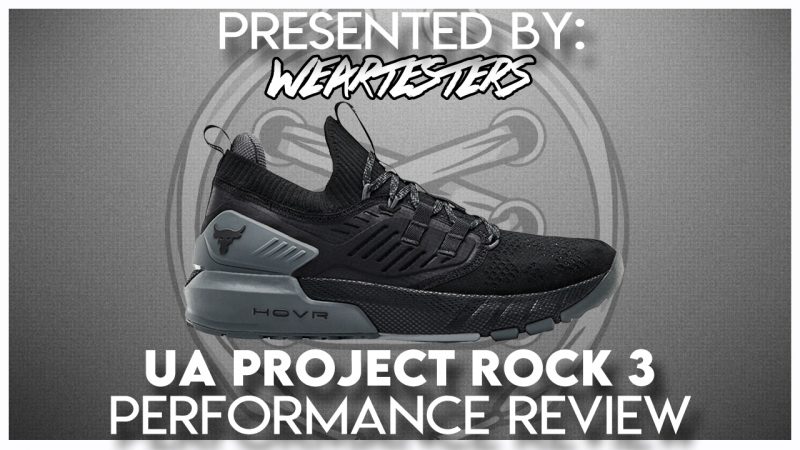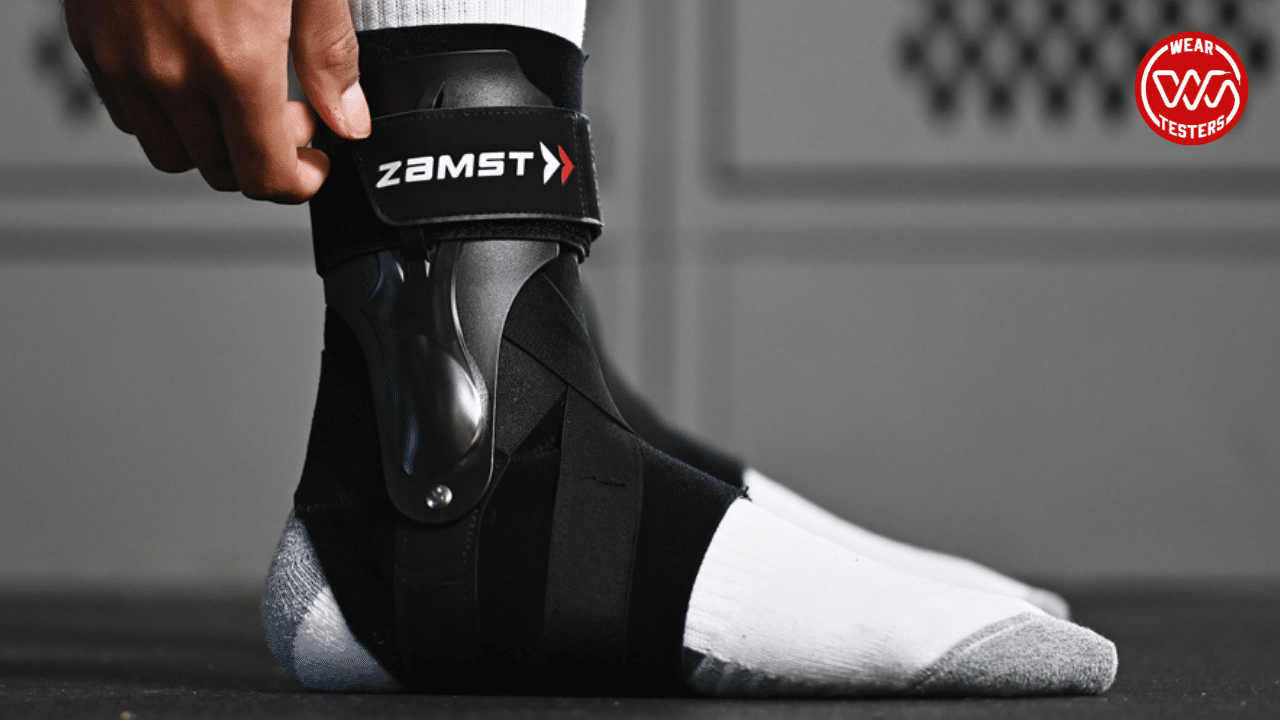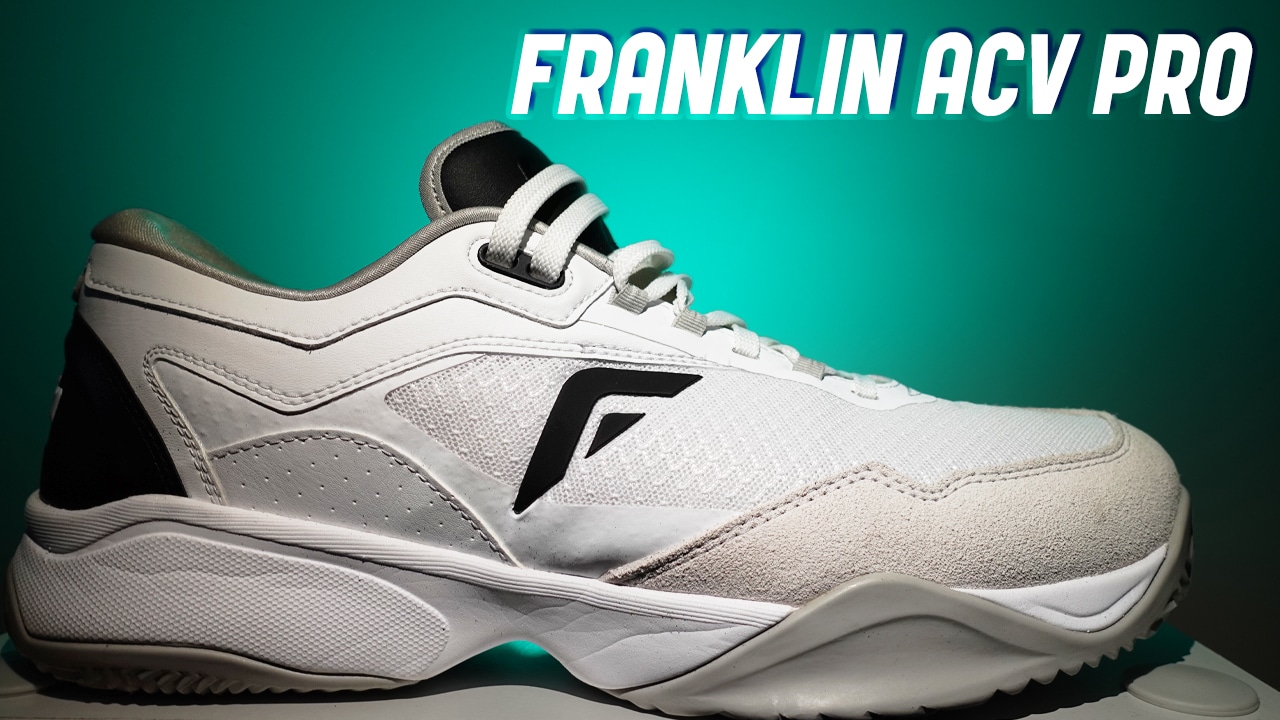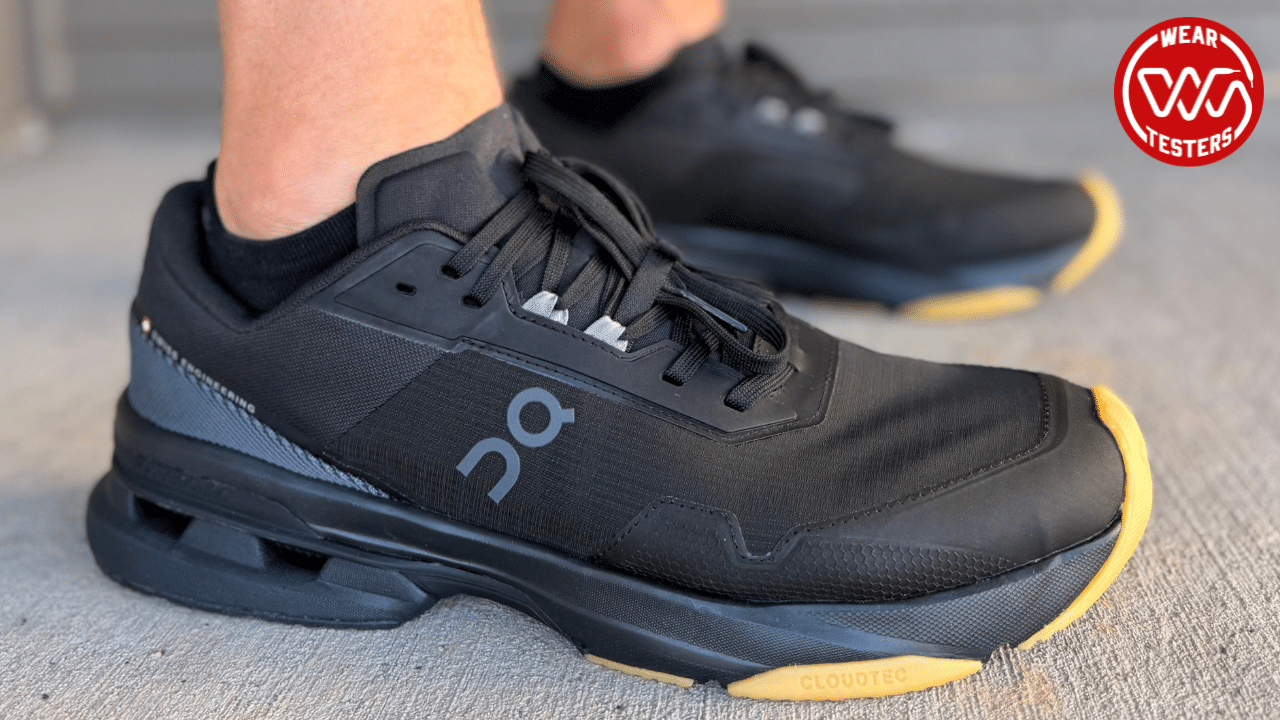UA Project Rock 3
The UA Project Rock 3 is a solid training shoe that just needs a few adjustments for it to be one of the greats.
Colorway: Black/ Pitch Gray
Release Date: 2020
Price: $140
With the UA Project Rock 3 now available, let’s turn back time. When I reviewed Dwayne “The Rock” Johnson’s original Under Armour Project Rock, I compared the shoe to a Jordan-like experience. Just like every 80s and 90s kid wanted to “Be like Mike”, the Rock just makes you want to go harder and be bigger, faster, and stronger.
Two years later, we’ve seen the Project Rock shoes and apparel growing huge with no signs of slowing down. Is the growth warranted? Does the Project Rock 3 still hold up in the weight rooms and training centers? Well, without spoiling our review too much the Project Rock 3 actually made our list of the best weightlifting shoes. in 2022.
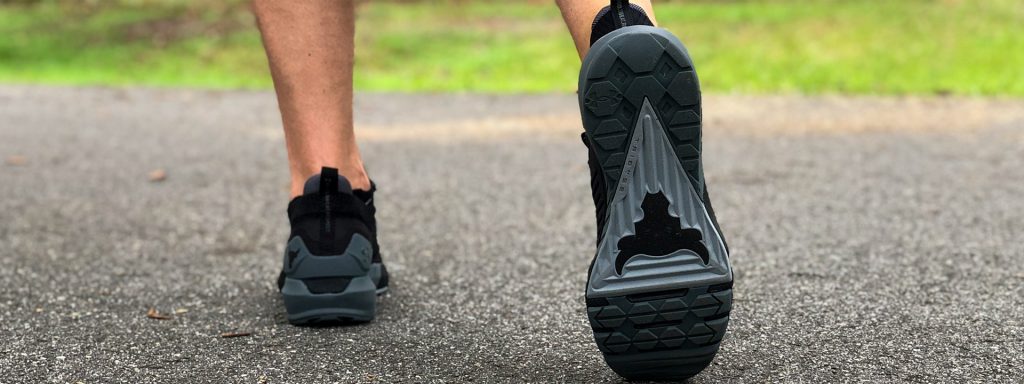
Traction
Bryan: The UA Project Rock 3 has almost the same outsole as the Project Rock 2. A TriBase panel in the midfoot for stability, large flex grooves cut across the forefoot, through the diamond patterns, and a large lug of sticky, durable rubber across the heel. Oh, and that HUGE Brahma Bull in the middle. It’s all about the logo.
The traction held up great under every task thrown at it. Throughout box jumps, squats, deadlifts, and stairstepper I had no slipping and no issues with wet spots from sweat. I even took them on the basketball court for some light drills and shooting without issue. I wouldn’t recommend them for ball but more on that later. The traction on a dusty, barely-varnished 24 Hour Fitness court was fantastic. I have no doubt about durability either as my Project Rock 2, over a year later, still shows very little signs of wear and tear and the Project Rock 3 uses the same sole.
Drew: I really enjoyed the sticky rubber compound used for the outsole. The majority of the time, I train on slick concrete floors. When I planted, I stayed planted. During lateral drills, I was able to turn on a dime. The Project Rock 3 traction doesn’t look too fierce, but the ample flex grooves and rubber compound make it extremely reliable.
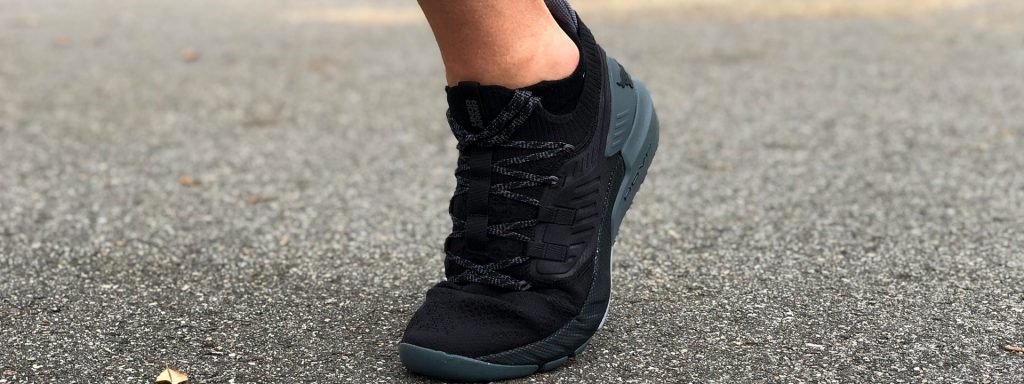
Cushion
Bryan: This is where the magic happened in the transition from the Project Rock 2 to the Project Rock 3. The tech specs say it is the exact same. “Compression mesh Energy Web contains & molds UA HOVR foam to give back the energy you put in”. However, this is a tale of two shoes. The Project Rock 3 is WAAAAAY better than the Project Rock 2 in terms of compression and impact protection. The midsoles look the same and use the same materials, but…THEY AIN’T THE SAME.
The forefoot of the Project Rock 3 is what I want in the UA basketball line. Soft but responsive, still stable on the edges, and flexible underfoot. Again, this is a major change from the Project Rock 2. It’s almost a runner feel in the forefoot. The shoe felt good up to three miles. It’s a little bulky for more than that. This isn’t Phantom 2 or Sonic HOVR but it’s a hell of a lot better than the Havoc 3.
The heel is caged and stiffer. And for that I’m thankful. Just like I talked about in the UA HOVR Apex 2 review, you need a more rigid heel to keep the shoe from twisting or compressing when you’re doing heavy lifts. If you have a bar loaded with plates on you, the edges of your shoe can’t fail. Luckily, the midsole of the Project Rock 3, working with the TriBase plate, keeps everything up and down.
Drew: Outside of the On Cloud X, this is the best cross training shoe for running so far in 2020. As Bryan mentioned, the HOVR implementation is fantastic. It’s a bulky shoe, so while they can handle 3 miles, they’re best at shorter sprints and drills. The cushion handles the pounding without a problem so even if you do have to go long, you won’t feel it in your knees and back. The cushion is good enough that moving from lifting to sprints during a Metcon doesn’t feel like a chore.
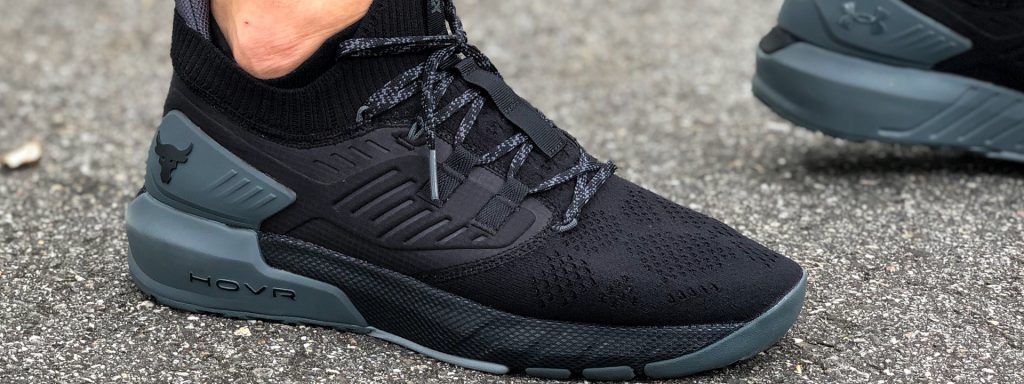
Materials
Bryan: In terms of appearance, the Project Rock 2 and 3 don’t look very different. One of the main things separating the two is the material choices. While the Rock 2 used a mesh midfoot and forefoot for flexibility and comfort, the Rock 3 goes even further. It uses a knit that is stretchy, compressive, comfortable, breathable and…and…and all the good things knit is. I want to call it a flat-knit like the UA HOVR Phantom 2 but the product description just says “knit”. Honestly, it feels and performs the same.
The midfoot cage is a thicker, padded textile is 3D-molded with a ripstop material overlay for support. The ankle drops more knit on us – again, almost the same as the Phantom 2 (still not a bad thing) while the heel cup is a harder rubber material. The last part to mention is the heel collar. Where the Rock 1 and 2 used knit or elastic all around the collar, the Rock 3 utilizes a HUGE achilles pillow for comfort and help with lockdown. Not much new overall, but if it works, why change it?
Drew: Knit isn’t used on as many cross training shoes because it’s hard to make it supportive enough for heavy weight lifting. Under Armour is one of the only brands that can manage it. And I’m glad they’re able to, because between the knit upper and giant heel pillow, this is one comfy shoe. And its comfort can 100% be traced back to the materials used.
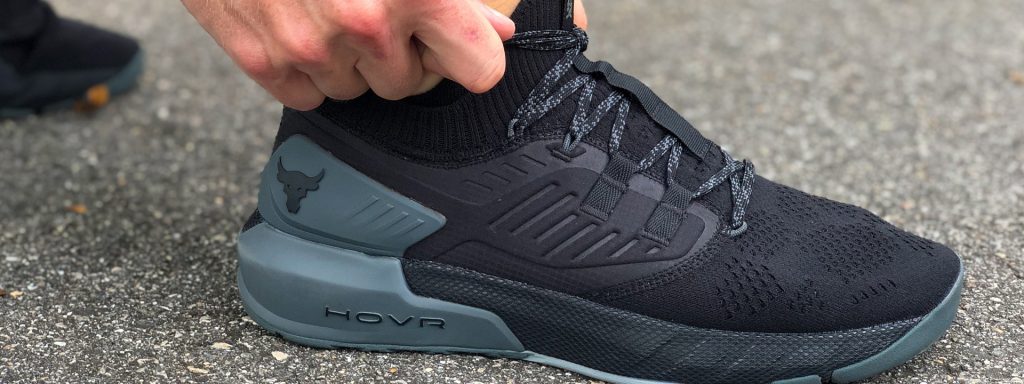
Fit
Bryan: I rave about and applaud Under Armour for fit in almost all of my reviews. Under Armour just knows how to make a shoe fit for most feet. Except for the Rock line. The Project Rock 1 was a half-size large and fit wide. The Project Rock 2 fit perfectly true to size. And the UA Project Rock 3 fits a half-size small. The toebox is extremely snug in my normal 10.5. Luckily, the knit is very accommodating and stretches well around your foot without being too constrictive and uncomfortable. I did feel my toes pushing the knit over the end of the shoe and my toes curling up from hitting the end, but again, nothing painful.
The midfoot and heel are completely locked in, using the thicker midfoot panel and the lacing system (fabric loops in the midfoot pulling the upper down onto the foot) to completely stop any movement inside. While the heel cup isn’t extremely rigid it does a great job of forming with the shoe around the foot. All of this is done without hotspots or rough patches. Again, Under Armour gets fit and comfort right – even if it is a half-size small.
Drew: Bryan’s right, the Project Rock 3 runs a half size small. It’s wearable in your true size but will be too tight for many people. It’s especially too tight for wide footers. I didn’t mind the tight, narrow fit because I tend to do a lot of quick movements and jumping in my Metcon workouts.
I did need a break in period so I wore the Project Rock 3 a few times casually before it broke in enough for a hard workout. If you don’t want to deal with the break in time, buy a half size larger than you normally get.
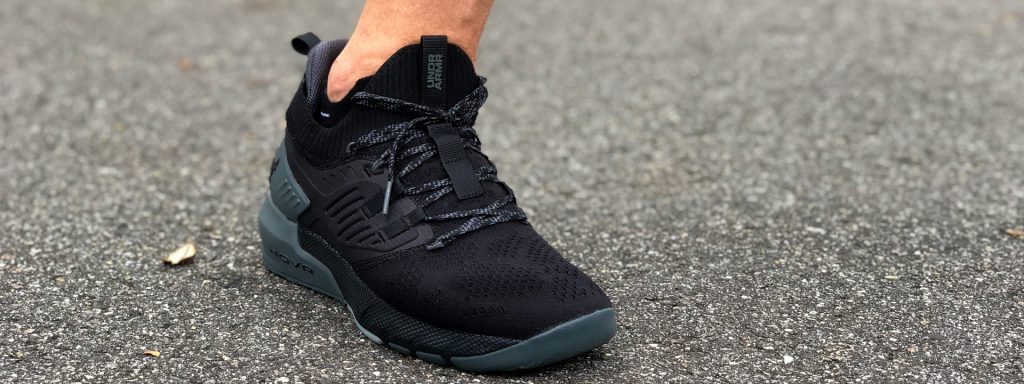
Support
Bryan: The support and stability factor of the Project Rock 3 comes down to one thing, the TriBase tooling. One thing every good weight training or gym shoe needs is stability from the base. Under Armour found a great base a couple years ago in the TriBase Reign, which then crossed over to the Rock series last year. The base is wide, solid under the arch, and connects the heel and forefoot for added torsional restriction. The last thing you want coming down from a box jump or while under a squat bar is an unstable platform. The TriBase takes care of it.
The rest of the support is, well, that’s it. The fit does lock in and keep your foot from sliding on lateral movements, but the knit forefoot doesn’t do so well trying to hold your foot on the footbed. The laces don’t help in that area because the laces don’t COVER that area – they stop in the midfoot. It isn’t an issue if you don’t do a lot of plyometric movements, but for any type of lateral (or crossover wear, like playing basketball) you will NOT enjoy the feel of your foot sliding over.
Drew: The support in the heel and midfoot is great. The forefoot, not so great. Going a half size down for a super tight upper helps, but doesn’t magically keep your toes from stretching the knit while cornering. The base of the shoe is built well so it takes corners and quick turns without threat of rollover, but your toes slide a bit. Whether the support is adequate for you depends on how much lateral movement you’ll be doing in them. If it’s just scattered drills during workouts, you’ll be fine. If it’s constantly running routes on a turf field in the offseason, you’ll want to prioritize another shoe.
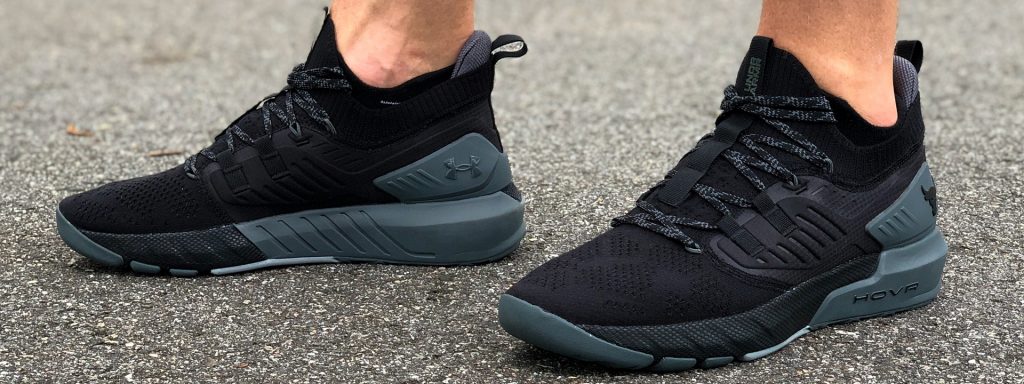
Overall
Bryan: Although I ended on a down note in the Support section, don’t get discouraged, the UA Project Rock 3 is a NICE trainer. The cushioning may be the best HOVR, outside of the running line, that we’ve seen yet. It’s way better than the Rock 2. The knit upper is super-comfortable. The TriBase, again, is stable and solid.
And, let’s be honest, it’s THE ROCK. He’s inspiring, charismatic, and energetic – he could sell salt at the ocean. If you are looking for a shoe built for the weight room, some light running, and cardio, look no further. The Project Rock 3 checks every box. If you need more of a runner, check out the Apex 2 or the Rise 2 (same great HOVR but with a lower ankle cut). Just like the previous two Project Rock models, this shoe feels like the Rock. It feels like intensity, like fight, like power…if you smell what Under Armour is cooking!!!
Drew: The UA Project Rock 3 is an overall winner. Small support and fit issues are overcome with great cushion, traction, and materials. At $140, it’s $10 more expensive than the Nike Metcon 6, but it packs better cushion and materials while the traction is about equal. The extra $10 is justified. Will you love it? If you’re weightlifting but still want comfort and cushion, this is a shoe you’ll enjoy both in the gym and on the streets.
Where to buy the UA Project Rock 3
The UA Project Rock 3 is available now for $140 at Under Armour and Dick’s Sporting Goods.
Thanks to Under Armour for sending test pairs. Under Armour didn’t receive any editorial control of the review. This review is based on our weartesters’ experiences using the shoes for HIIT, Metcon, weightlifting workouts, running, casual wear, and more.

